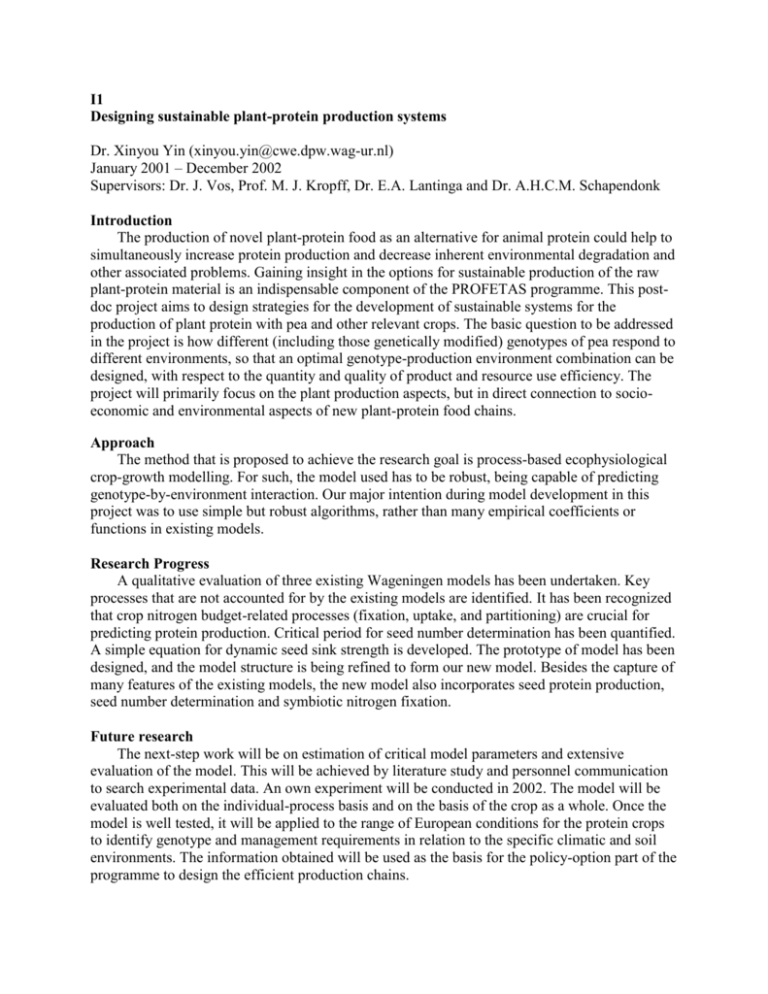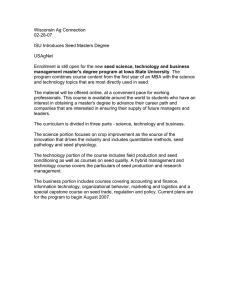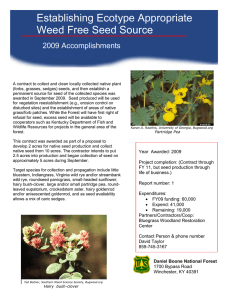Genotype x Environment x Management interactions
advertisement

I1 Designing sustainable plant-protein production systems Dr. Xinyou Yin (xinyou.yin@cwe.dpw.wag-ur.nl) January 2001 – December 2002 Supervisors: Dr. J. Vos, Prof. M. J. Kropff, Dr. E.A. Lantinga and Dr. A.H.C.M. Schapendonk Introduction The production of novel plant-protein food as an alternative for animal protein could help to simultaneously increase protein production and decrease inherent environmental degradation and other associated problems. Gaining insight in the options for sustainable production of the raw plant-protein material is an indispensable component of the PROFETAS programme. This postdoc project aims to design strategies for the development of sustainable systems for the production of plant protein with pea and other relevant crops. The basic question to be addressed in the project is how different (including those genetically modified) genotypes of pea respond to different environments, so that an optimal genotype-production environment combination can be designed, with respect to the quantity and quality of product and resource use efficiency. The project will primarily focus on the plant production aspects, but in direct connection to socioeconomic and environmental aspects of new plant-protein food chains. Approach The method that is proposed to achieve the research goal is process-based ecophysiological crop-growth modelling. For such, the model used has to be robust, being capable of predicting genotype-by-environment interaction. Our major intention during model development in this project was to use simple but robust algorithms, rather than many empirical coefficients or functions in existing models. Research Progress A qualitative evaluation of three existing Wageningen models has been undertaken. Key processes that are not accounted for by the existing models are identified. It has been recognized that crop nitrogen budget-related processes (fixation, uptake, and partitioning) are crucial for predicting protein production. Critical period for seed number determination has been quantified. A simple equation for dynamic seed sink strength is developed. The prototype of model has been designed, and the model structure is being refined to form our new model. Besides the capture of many features of the existing models, the new model also incorporates seed protein production, seed number determination and symbiotic nitrogen fixation. Future research The next-step work will be on estimation of critical model parameters and extensive evaluation of the model. This will be achieved by literature study and personnel communication to search experimental data. An own experiment will be conducted in 2002. The model will be evaluated both on the individual-process basis and on the basis of the crop as a whole. Once the model is well tested, it will be applied to the range of European conditions for the protein crops to identify genotype and management requirements in relation to the specific climatic and soil environments. The information obtained will be used as the basis for the policy-option part of the programme to design the efficient production chains.











